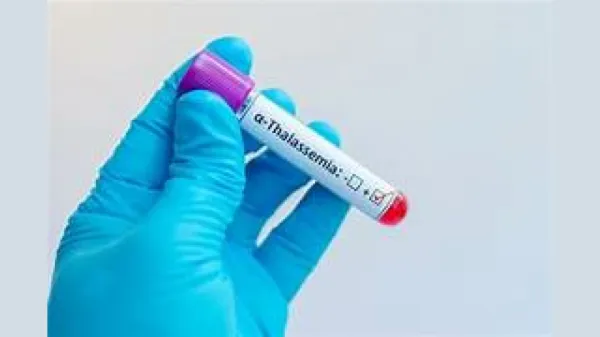
Thousands of children with Thalassemia major are born every year, and the number keeps increasing. The cases are rising at a rapid rate in children. Thalassemia is a genetic blood disorder wherein the child tends to produce abnormal hemoglobin, which can cause the body to produce fewer red blood cells. These abnormal cells fail to function properly, and the child can experience signs such as anemia and fatigue. The condition is inherited, meaning children are at risk if both parents carry the gene.
This article by Dr Badal Taori, Consultant General Medicine, Medicover Hospitals, Kharghar, Navi Mumbai sheds light on the symptoms, diagnosis, and treatment of this condition.
Types of Thalassemia:
· Alpha Thalassemia: Occurs when there is a deficiency or absence of alpha-globin chains, which are part of hemoglobin.
· Beta Thalassemia: In this type, there is a defect in the beta-globin chains. Beta thalassemia can be categorized into three types:
· Thalassemia Minor: A carrier state where children have a mild form of anemia but no major health issues.
· Thalassemia Intermedia: Here, children may need occasional blood transfusions.
· Thalassemia Major (Cooley’s Anemia): The most severe form, which requires regular blood transfusions from an early age.
Symptoms: Those children with this condition will exhibit symptoms such as fatigue and weakness, pale or yellowish skin (jaundice), slow growth and delayed development, enlarged spleen or liver, bone deformities, particularly in the face and skull, and dark urine due to the breakdown of red blood cells.
Diagnosis: Complete Blood Count (CBC) will be advised for the child to check for anemia and abnormal red blood cell count. Genetic Testing will confirm mutations in the hemoglobin genes. Parents must initiate timely management after the confirmed diagnosis of this condition.
Treatment:
· Blood Transfusions: Will be required for severe cases of beta thalassemia to maintain adequate hemoglobin levels in children.
· A bone marrow transplant, also known as a hematopoietic stem cell transplant (HSCT), is beneficial for children with this condition. This procedure involves replacing the patient’s faulty or damaged blood-forming stem cells with healthy stem cells from a compatible donor, helping the body produce normal red blood cells and potentially offering a long-term cure.
Thalassemia requires lifelong care. Regular medical check-ups and proper management, including blood transfusions, are essential in helping children with thalassemia thrive. Awareness and genetic counseling for parents are key in preventing and managing this inherited disorder.
-
Who is called breast implant, know how much will be spent in getting it done?

-
Shani Pradosh Vrat in Jyeshtha 2025: Date, Puja Time and Spiritual meaning

-
These are the most effective ways to avoid breast cancer, read and follow carefully

-
Noise Master Buds Review: Premium Sound at ₹7999, Worth the Hype

-
Apple is bringing brain-control technology, now iPhone and iPad will run with mind
